
Inflammation is the way that our body responds to injury or infection. The process is important, but many people experience chronic low-grade inflammation that can put their health at risk. Thankfully, there are various anti-inflammatory foods that can help to lower inflammation throughout your body.
For this list, we’ve rounded up the best anti-inflammatory foods, ones that should be in your diet regularly. At the same time, cutting down on sugar, ultra-processed foods, and dairy products may also help to lower your inflammation and protect your health.
While some foods on this list have more powerful anti-inflammatory properties than others, relying on just a few powerful foods isn’t the best way to decrease your inflammation. Instead, the most powerful approach is to include a wide variety of anti-inflammatory foods in your diet.
Doing so is important, as each type of food has its own combination of beneficial compounds. This is particularly true in plants, as there have been around 10,000 phytochemicals identified. Only a fraction of these have been studied in-depth and there are other unknown compounds too.
If you only focus on a few anti-inflammatory foods, then you could easily miss out on some beneficial compounds entirely. The best approach is to follow a healthy diet that relies on whole foods, particularly a wide variety of fruits and vegetables. Doing so gives you access to the widest range of plant-based nutrients.
Anti-Inflammatory Foods
- Berries
- Tart Cherries
- Broccoli
- Fatty Fish
- Mushrooms
- Avocados
- Green Tea
- Peppers
- Dark Chocolate
- Cocoa
- Grapes
- Purple Food
- Extra Virgin Olive Oil
- Dark Green Leafy Vegetables
- Nuts
- Carrots
- Sweet Potatoes
- Dry Beans
- Ginger
- Garlic
- Turmeric
- Cinnamon
- Cauliflower
- Fermented Foods
- Beets
- Bone Broth
- Chia Seeds
- Flaxseeds
- Tomatoes
Berries

Berries are rich in antioxidants, polyphenols, and anti-inflammatory compounds. They’re also one of the easiest ways to get these compounds into your diet, as berries are readily available and often aren’t too expensive.
You’re not limited to fresh berries either. Frozen berries still contain most of the nutrients that fresh ones offer, as they are snap frozen when they are harvested. They’re very easy to use in smoothies too.
Frozen berries could even be better in some cases, as fresh fruit is often transported by truck and then spends quite some time in the grocery store. Fruit tends to decline in quality over time, while some of the antioxidants can break down too.
While all berries offer anti-inflammatory benefits, blueberries are thought to be particularly powerful, partly because of their bright blue color. They’ve been featured in many studies focusing on the inflammation or the immune system.
Tart Cherries
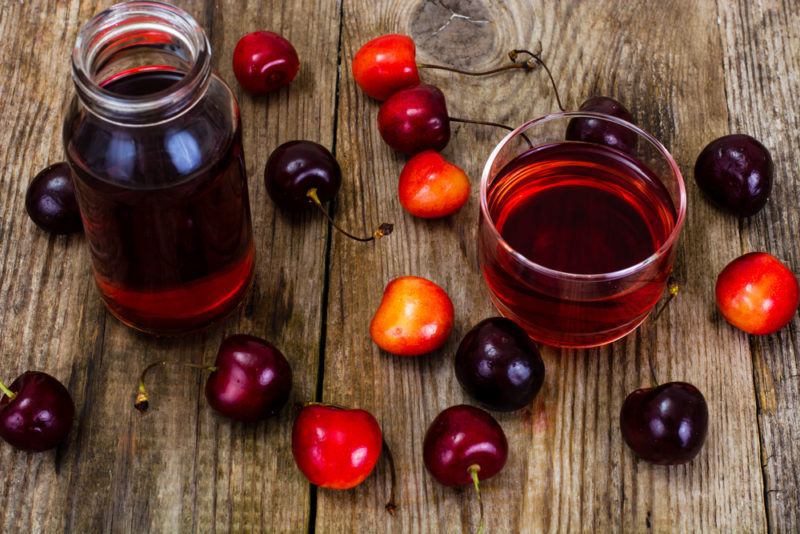
Cherries of all types may be relevant for reducing inflammation, as they’re packed full of phytochemicals. But, tart cherries are particularly powerful and have been linked to increasing antioxidants in the bloodstream.
Most research into tart cherries has focused on tart cherry juice, rather than the cherries themselves. Tart cherry juice offers an easy way to get a large amount of antioxidants at once.
As the name suggests, tart cherries are tart. This means that their sugar content tends to be lower than sweet cherries, which is perfect. After all, sugar can increase inflammation, so a large dose of sugar isn’t ideal if you’re trying to decrease inflammation.
Broccoli

When you think of anti-inflammatory foods, broccoli probably isn’t the first option that springs to mind. Yet, the vegetable is rich in nutrients and has anti-inflammatory properties.
This time, the effects are strongly driven by the compound sulforaphane, which is an antioxidant. It contains various other healthy compounds too, such as carotenoids and the flavonoid quercetin.
Besides, broccoli is well-known for being nutritious and good for your health.
Fatty Fish

Experts often say that you should consume fish at least once a week, as it is incredibly healthy. One reason is that fish contains omega-3 fatty acids. The amount of omega-3 tends to be higher in fatty fish, like salmon, making fatty fish a particularly good choice.
The omega-3 fatty acids are also why fish is so good for inflammation.
One theory suggests that inflammation in our bodies is linked to a poor ratio of omega-6 fatty acids to omega-3 fatty acids. We generally get too many omega-6 fatty acids in our diet and not enough omega-3 fatty acids.
Eating fatty fish regularly is a powerful way to change the ratio of omega fatty acids, which then helps to reduce inflammation.
Mushrooms

Mushrooms contain a range of different anti-inflammatory compounds, including phenolic compounds, fatty acids, polysaccharides, and biometals. There have even been various academic papers that specifically focus on how mushrooms reduce inflammation.
Mushrooms have other advantages too. For example, they’re low in calories, while also containing plenty of beneficial nutrients. Some types of mushroom have become particularly popular for improving health, such as Ganoderma lucidium, which is thought to have weight loss benefits and is sometimes included in coffee.
While some mushrooms have more anti-inflammatory compounds than others, the most powerful approach is to include a variety of mushroom types in your diet. After all, each type of mushroom has its own particular balance of nutrients and other compounds.
Avocados

Avocados have a lot going for them. They’re delicious, packed with healthy fats and contain nutrients like potassium and magnesium as well. In fact, if you want to increase your healthy fat intake, avocados are one of your best choices.
There’s even the suggestion that the anti-inflammatory properties of avocados may offset inflammation caused by other foods. This is perfect for anyone who doesn’t have their entire diet perfected yet.
Green Tea

Green tea is one of the healthiest drinks out there and has a long history of traditional use. The tea contains various plant-based nutrients, including catechins and other antioxidants.
Reducing inflammation is just one potential benefit that has been associated with green tea. The tea may also help to promote energy and even weight loss.
Benefits of the tea itself aren’t the only consideration. Green tea is an easy way to increase your water intake too. Doing so has many flow-on benefits for your health.
All types of green tea offer benefits, but matcha tends to be the most powerful. This contains a higher amount of catechins, which could lead to more powerful effects on inflammation.
Bell Peppers

Bell peppers are a great addition to your diet – and they contain a wide variety of antioxidants. Their vitamin C content alone could help to reduce inflammation, but bell peppers also contain quercetin. This antioxidant may have additional abilities to help decrease inflammation.
Besides that, bell peppers are a versatile vegetable. You can cut them up and include them in countless different recipes. The peppers can even be stuffed and baked in the oven.
Chili Peppers

Chili peppers offer anti-inflammatory benefits too. This time, the effect is linked to the compounds ferulic acid and sinapic acid. Both compounds have the potential to reduce inflammation.
Most of the time, you’ll be using chili peppers as a spice rather than the whole pepper. The powdered spice version does have the same anti-inflammatory properties, so you can pick the type that you prefer.
Powdered chili pepper is actually better in some ways, as this is easier to include in your diet. For example, you can add it as an ingredient to your meals or even mix it in with hot drinks.
Dark Chocolate

Milk chocolate mightn’t be great for your health, but dark chocolate certainly is. Many of the benefits are linked to flavanols that come from cocoa. These are antioxidants that also have anti-inflammatory properties.
While flavanols can be found in most types of chocolate, their levels directly associated with the cocoa percentage. You’re getting more flavanols when there is more cocoa used in the chocolate. This generally means that you’ll need to be eating chocolate that is at least 70% cocoa, ideally more.
Chocolate that is this dark can take some time to get used to. Still, many people find that they enjoy dark chocolate more than milk chocolate.
Just make sure that you check the ingredients label carefully. You’ll get the most benefits from chocolate that doesn’t have a ton of added ingredients. And, the less processing, the better.
Cocoa
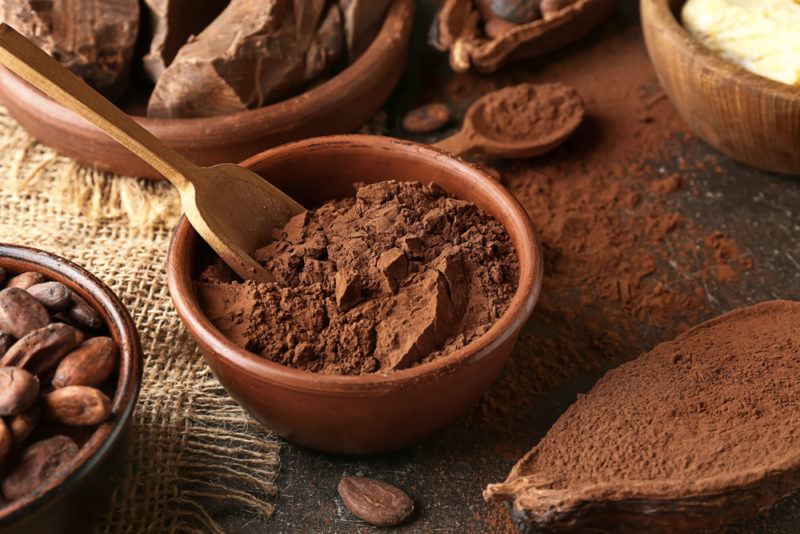
The anti-inflammatory benefits of dark chocolate come from cocoa, so why not go straight to the source and add cocoa to your diet?
To be clear, we’re not talking about drinking chocolate, which often has extra ingredients and far too much sugar. Instead, we’re talking about pure cocoa powder, which should ideally contain nothing but cocoa.
If you find dark chocolate too intense, then cocoa powder could be an easier way to get the compounds into your diet. The powder can be used in countless ways, such as added into a smoothie or sprinkled on top of your muesli.
Grapes

While grapes do contain sugar, they’re still powerful for fighting inflammation. This is partly due to the antioxidants that they contain, along with anthocyanins and the compound resveratrol.
However, it’s important to keep an eye on how many grapes you eat. Grapes contain natural sugar along with fiber, so they’re healthier than eating a candy bar. Even so, too much sugar contributes to inflammation, even when the sugar is from a natural source.
Purple Food
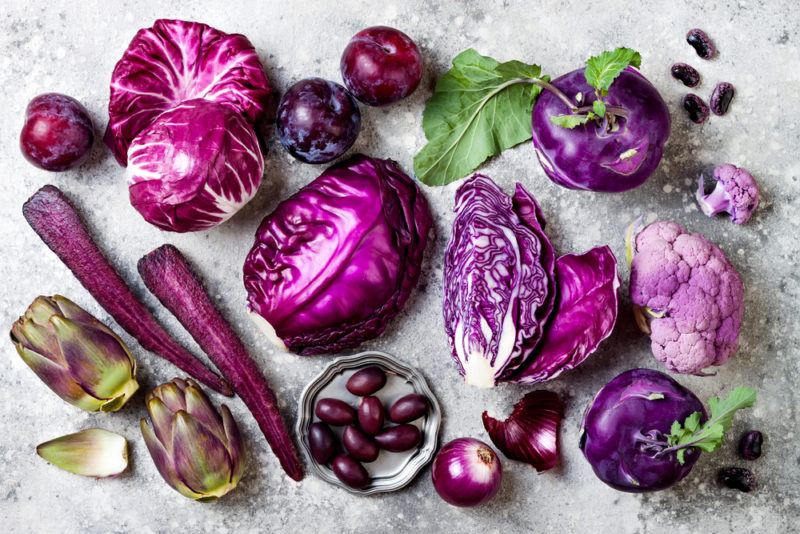
Many of the anti-inflammatory properties of grapes come from a class of compounds called anthocyanins. Anthocyanins are pigment molecules, which produce the rich colors that are seen in blue, purple and red plants.
Anthocyanins belong to a class of compounds call flavonoids and they have antioxidant properties. They may be linked to other benefits as well, including the potential to improve the immune system and perhaps even decrease disease risk.
Because anthocyanins are pigment molecules, they’re easy to find. Most fruits and vegetables that are purple, blue or red will contain the beneficial compounds. This includes unusually colored fruits and vegetables, like purple carrots and purple potatoes.
However, anthocyanins are often heat sensitive. This may mean that the benefits decrease with cooking.
Extra Virgin Olive Oil

Regardless of the type that you choose, olive oil is good for you. For one thing, it is high in monounsaturated fats, particularly oleic acid. These fats have been linked to various benefits, including the chance to decrease inflammation.
Olive oil also contains the compound oleocanthal, which is an antioxidant. Oleocanthal is thought to operate through the same pathway as the anti-inflammatory medication ibuprofen.
We’ve also seen that many of the healthiest populations in the world, including those in Mediterranean countries, use olive oil regularly.
As a general rule, you’ll get the most health benefits from extra virgin olive oil. This type of olive oil is made from the first pressing of olives, so it tends to contain the most beneficial compounds.
If you can’t get extra virgin olive oil, don’t worry, virgin olive oil will have many of the same benefits. Just try to avoid refined olive oil.
Dark Green Leafy Vegetables
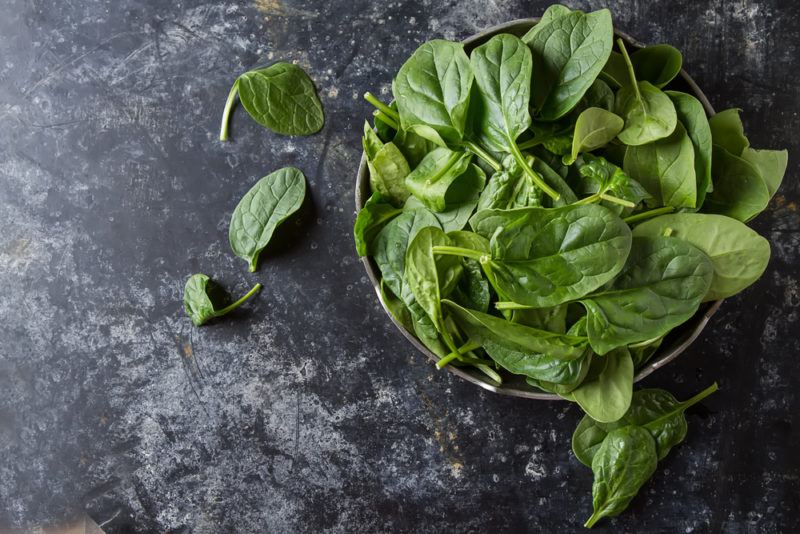
Dark green leafy vegetables, like spinach, Swiss chard, and kale, make their way onto almost every list of healthy food – which isn’t so surprising. These greens are packed full of beneficial compounds, including plenty of antioxidants and anti-inflammatory compounds.
The greens are low in calories. They’re versatile too. There are many ways to include the greens in a healthy diet.
In fact, as a general rule, having plenty of vegetables in your diet is a critical way to keep your inflammation low. Doing so is ultimately much more powerful than trying to add a few powerful anti-inflammatory foods into your diet.
Nuts

Nuts have many advantages, as they’re a convenient source of protein and healthy fats. They’re also a source of alpha linoleic acid (ALA). This is a type of omega-3 fatty acid, which makes it powerful for fighting inflammation.
Now, ALA isn’t as powerful as omega-3 fatty acids from fish, but ALA still has benefits. Besides that, it’s easy to quickly eat a handful of nuts, while you won’t always have fish on hand.
Nuts have other beneficial compounds too, such as vitamin E, l-arginine, and magnesium. The amount of each nutrient depends on the type of nut, so it’s best to include various types of nuts in your diet.
Because nuts are high in fat and calories, they’re most powerful as an alternative to other less healthy snacks. Just adding nuts to your diet could be problematic if your calorie intake is relatively high.
Carrots

Vegetables are always an important part of an anti-inflammatory diet, regardless of the type of vegetable that you choose. Carrots are particularly relevant, as they contain significant levels of vitamin A and beta-carotene.
Both of these compounds are important for reducing inflammation. They’re also antioxidants, which means that they can offer other health benefits too.
Sweet Potatoes

Like carrots and other orange-colored vegetables, sweet potatoes are a good source vitamin A and beta-carotene. Sweet potatoes are also surprisingly healthy, as they’re high in fiber and don’t contain too many calories.
There are countless ways to use sweet potatoes too. They even feature in many meal prep recipes.
Dry Beans

How can we forget beans? There are many types out there, like black beans, pinto beans, and kidney beans. Each type has a different nutritional profile, but they all contain a decent amount of fiber and plant-based nutrients, some of which help to reduce inflammation.
Another benefit is that beans store so well. They’re a perfect backup source of protein, especially for vegetarians and vegans.
Ginger

Ginger is another important addition to your diet. It has been linked to a variety of health benefits, which is why you’ll often see it included in hot drinks when people are sick or in immune-boosting smoothies.
The inflammation fighting benefits have been mostly linked to the compound gingerol, which is the key bioactive compound in the spice. Gingerol is also what gives ginger its distinctive flavor.
Garlic

Garlic is a common addition to many meals, making it easy to increase your garlic intake. Garlic is significant because it contains diallyl disulfide. This compound has been linked to inflammation decreases.
Fresh garlic remains a good way to get the benefits that you’re looking for, but there are also garlic supplements that you can try instead. Just make sure that any company you buy from has a good reputation and a reliable product.
Turmeric

While turmeric isn’t precisely a food, the bright orange spice is renowned for its health benefits, including its ability to reduce inflammation. Much of turmeric’s anti-inflammatory effect comes from curcumin, which is the spice’s key compound.
Curcumin is slightly unusual in that our bodies absorb the compound best when it is combined with piperine. Piperine is the active compound in black pepper. Because of this, many turmeric supplements include piperine or a similar compound to help with absorption.
While you can get turmeric through supplements, including it in your diet isn’t as difficult as you might expect either. Plus, many of the approaches give you the chance to consume other anti-inflammatory ingredients at the same time.
Cinnamon

Cinnamon is another spice that has anti-inflammatory properties. It also tastes good, so getting more cinnamon in your diet isn’t difficult.
You can even find anti-inflammatory drink recipes that contain cinnamon, turmeric, and ginger, making them especially powerful. This recipe from One Dish Kitchen is just one example of many.
There are two main types of cinnamon that you’ll find at stores: Ceylon cinnamon and Cassia cinnamon. Ceylon cinnamon tends to be more expensive, but it is also considered ‘true’ cinnamon.
If you’re going to add cinnamon to your diet regularly, it’s worth going the extra distance and choosing Ceylon cinnamon. Doing so may give you more health benefits. Plus, too much Cassia cinnamon may cause problems, as Cassia cinnamon has significant amounts of coumarin – a compound that could be harmful in high doses.
Cauliflower

Cruciferous vegetables tend to be particularly good for health and cauliflower is no exception. It isn’t short on healthy nutrients, including important ones such as vitamin B6, vitamin C, fiber, and potassium.
Among the plant-based compounds present, cauliflower features a compound called glucobrassicin. The compound is present in other cruciferous vegetables too and may help to stop inflammation from a very early point in the process.
Fermented Foods

Fermented foods, like kombucha and kefir, have become very popular in recent years. These foods contain live beneficial bacteria (called probiotics) that are thought to promote health in a variety of ways. The benefits are linked to the way that probiotics may be able to improve the balance of healthy bacteria in our guts.
While the idea might sound a little strange, it is critically important. The bacteria in our guts play a large role in the systems throughout our bodies. Improving the bacterial balance could have many flow-on effects for health, including the chance to decrease inflammation.
There are countless strains of bacteria out there and fermented foods tend to have different strains than each other. Because of this, you’ll get the most benefits by including a variety of different options in your diet. This includes different types of fermented foods and also fermented foods from different sources
Beets
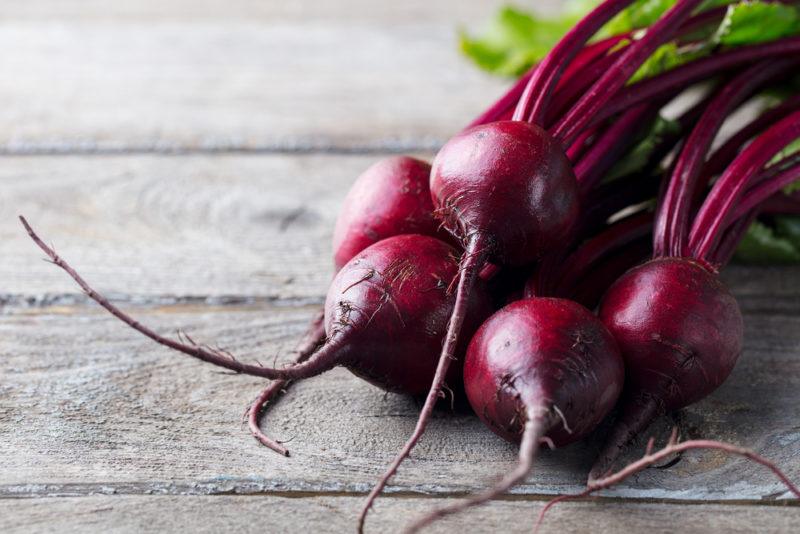
The bright red color of beets should be a clear indication of the vegetable’s anti-inflammatory and antioxidant properties. The betalain pigment molecules are a key reason for these benefits, but other compounds are significant too.
You’re not limited to beets themselves either. You’ll see many of the same benefits by including beetroot juice in your diet. Even powdered beetroot could be helpful.
Bone Broth

Bone broth is a liquid that is made by brewing bones in water. A little vinegar is sometimes added to help break down some of the tissues and help to release nutrients.
Bone broth is significant as some nutrients from bones and bone marrow aren’t often found in our modern diets. Because of this, some people end up drinking bone broth as a nutritional supplement. Others use it as a base for soups or in other recipes.
The nutrients present could help with inflammation. The same is true for some of the amino acids. If nothing else, it’s clear that bone broth is a healthy addition to the diet.
Chia Seeds

Chia seeds are sometimes called a superfood and it’s easy to see why. The tiny little seeds contain a surprising number of beneficial nutrients.
Chia seeds even contain healthy omega-3 fatty acids, which play a key role in reducing your inflammation. Because these omega-3 fatty acids are largely alpha-linolenic acid, their impact of inflammation isn’t as strong as omega-3 fatty acids from fish. Still, you’re getting a decent amount of the fatty acids and the seeds are certainly good for you.
Flaxseeds

More than 50% of the fatty acids in flaxseeds are ALA, which makes these seeds particularly powerful. However, eating flaxseeds as-is isn’t the ideal approach.
One alternative is to use flaxseed meal, which can be easily added into dishes to boost their nutrient content. Flaxseed oil is an even more powerful approach, giving you a decent dose of ALA in a small amount of liquid.
Tomatoes

Like other fruits and vegetables, tomatoes contain a variety of beneficial nutrients. Vitamin C and potassium are especially important.
There’s another interesting compound too – lycopene. This is a carotenoid antioxidant that may be more powerful than most for decreasing inflammation.
Carotenoids tend to be better absorbed with a source of fat. As such, you’ll get the most benefits by including tomatoes as part of a meal or cooking them with fat.

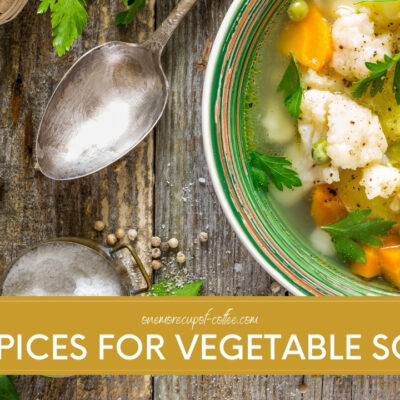















 8 Scent of the Month Clubs + Gift Sets
8 Scent of the Month Clubs + Gift Sets
Leave a Reply